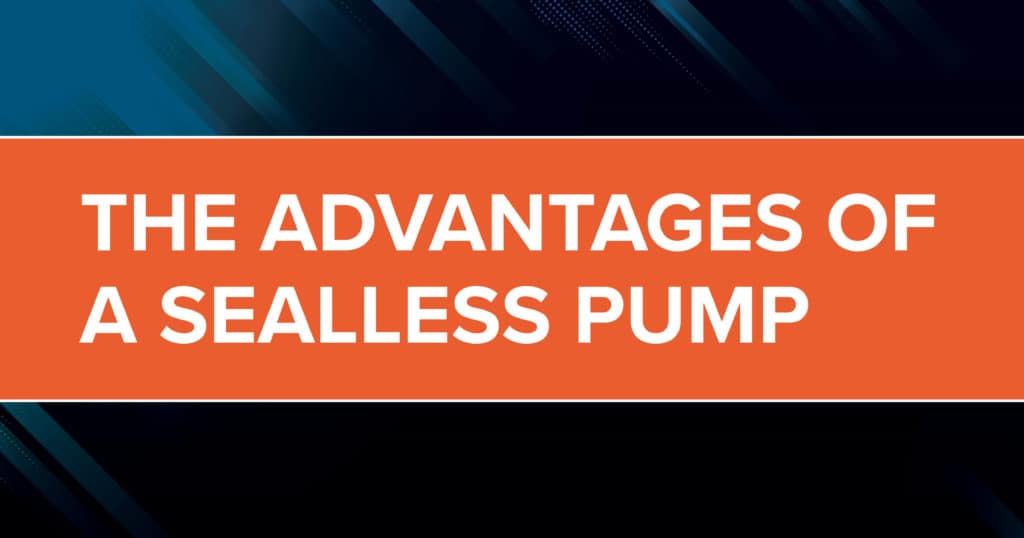Sealless pumps are designed to contain fluids that may be dangerous, toxic, caustic, or extremely valuable; in other words, liquids that can’t be leaked into the environment or lost. Sealless pumps are also regularly found where space is limited, or there are noise or safety regulations. And in all their various applications sealless pumps offer safe performance and quiet operation.
How a Sealless Pump Works
The purpose of the sealless pump’s design is to eliminate the dynamic shaft seal between the wetted end of the centrifugal pump and the atmosphere, or environment, surrounding the pump. With this in mind, the pump’s rotor assembly must be enclosed within a pressure vessel, within the pumped fluid. This pressure vessel is also known as “primary containment.” It is sealed by static seals, such as O-rings or gaskets.
A rotating magnetic field is generated through the containment barrier, driving the inner rotor assembly. In general, all sealless pumps fall into two main categories:
- Magnetic Driven Pump (MDP) – Separately coupled with a closed or semi-open impeller
- Canned Motor Pump (CMP) – Close-coupled with end suction and overhung impeller
CMPs and MDPs are commonly used for similar applications. The specific pump that’s needed is determined by factors including internal pressure, flow rate, heat transfer, and temperature consideration.
Sealless Pump Advantages
Below are just some of the key advantages of sealless pumps:
- Safe handling of hazardous liquids
- Reduced noise during operation (especially with CMP designs)
- No leakage from primary containment into the environment
- Axial thrust not affected by suction pressure
- Secondary containment options available
- No loss of valuable liquids
- Reduces or eliminates need for replacement of shaft seals
Sealless Pump Disadvantages
Unfortunately there are also some downsides to sealless pumps that it’s important to be aware of. The temperature of magnet components in MDPs and the motor windings of CMPs must be carefully monitored. The bearing environment requires extra control to ensure the non-flashing liquid remains clean. Overheating can occur with suction loss. Bearings must also be closely monitored. If they fail before detection, costly repairs may be required. Lastly, operators will likely require additional training and support when learning to use a sealless pump; more so than compared to a standard centrifugal pump design.
To learn more about sealless pumps and to determine which model is right for your operation, contact Cortech DXP today. Our pump experts will walk you through everything you need to know, and help you configure a sealless pump for your specific application.

